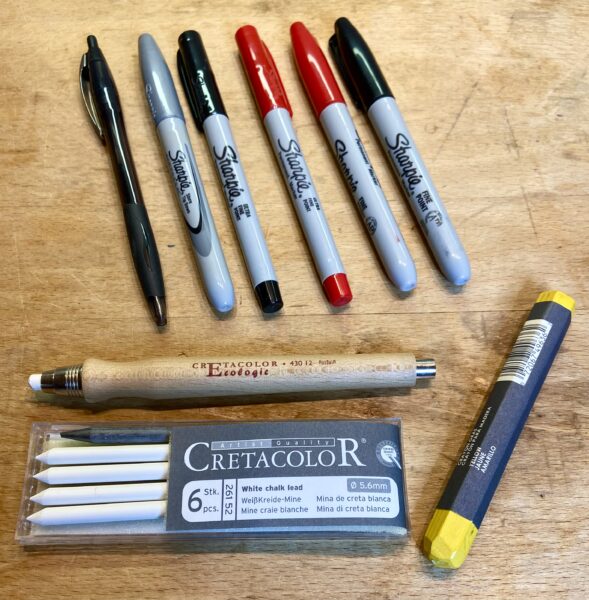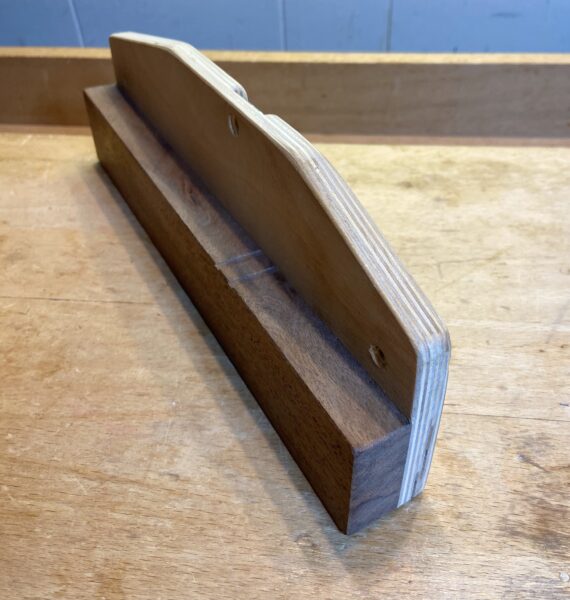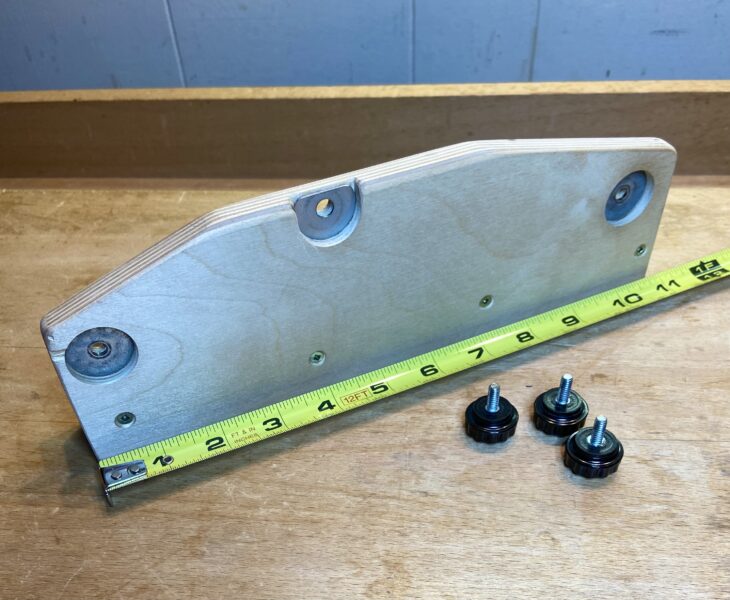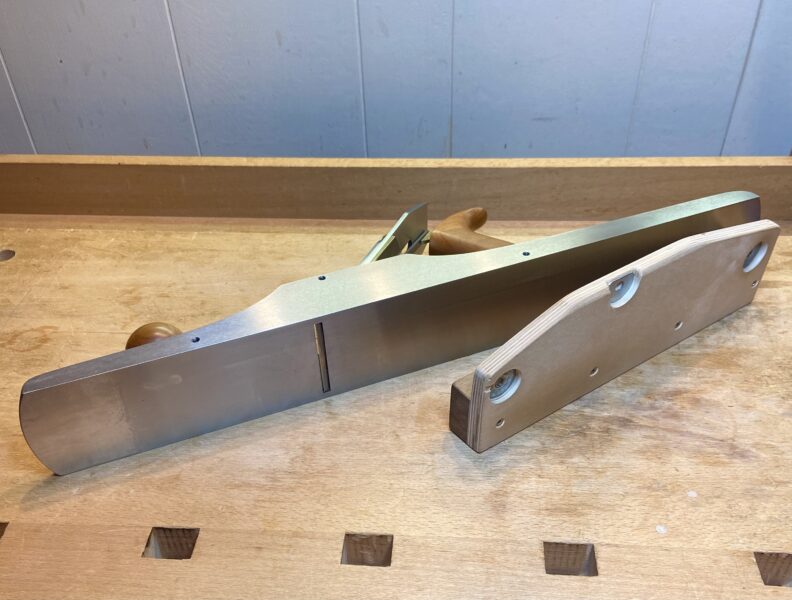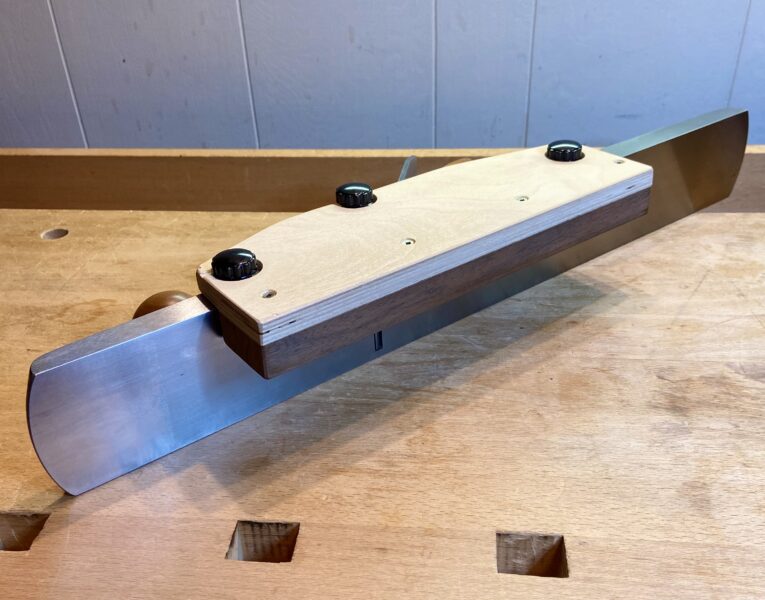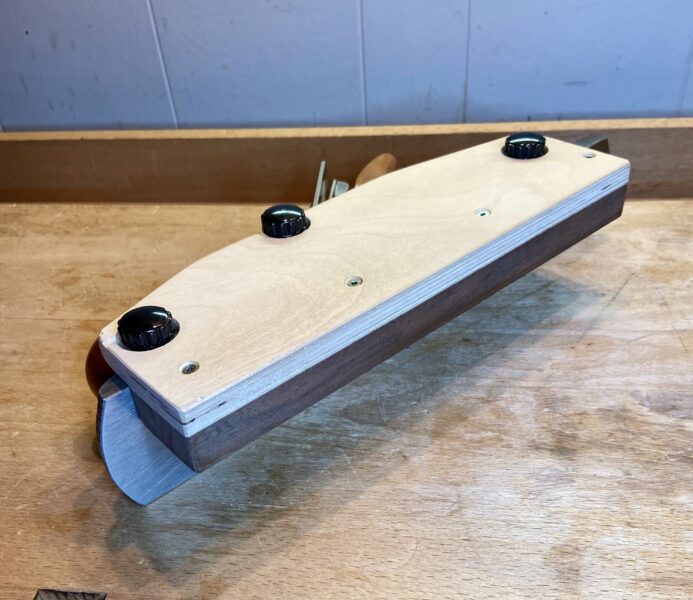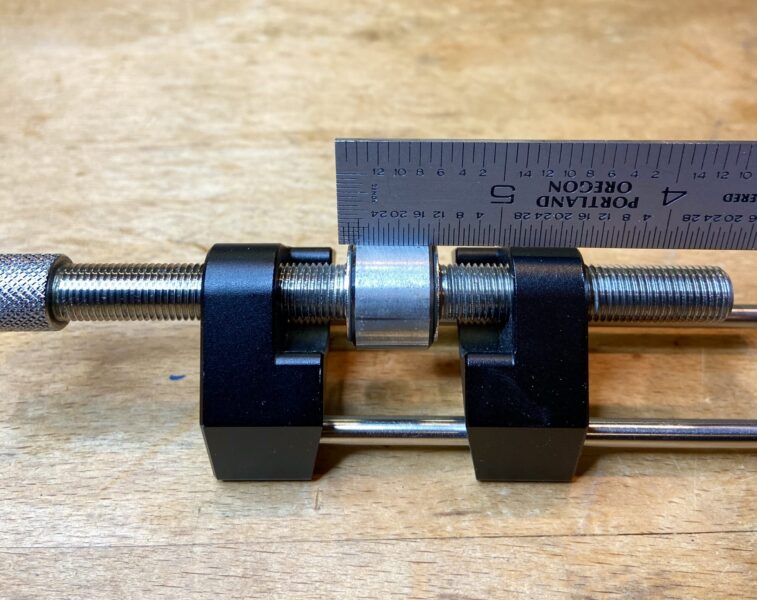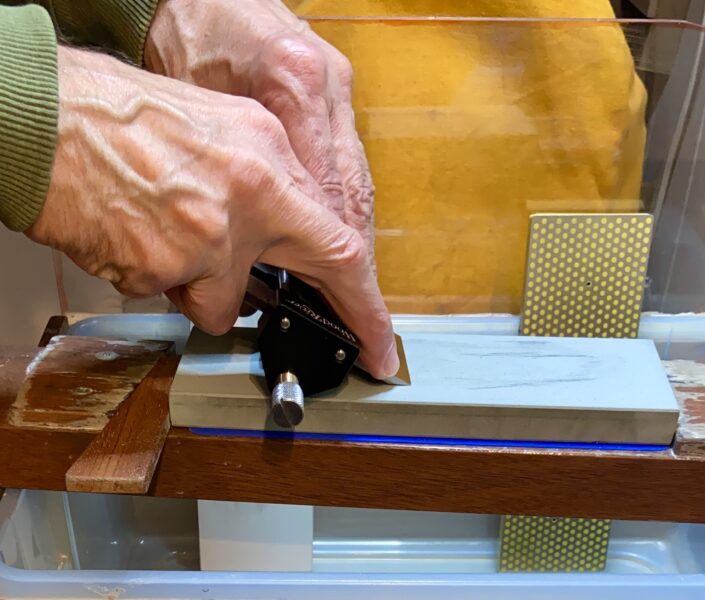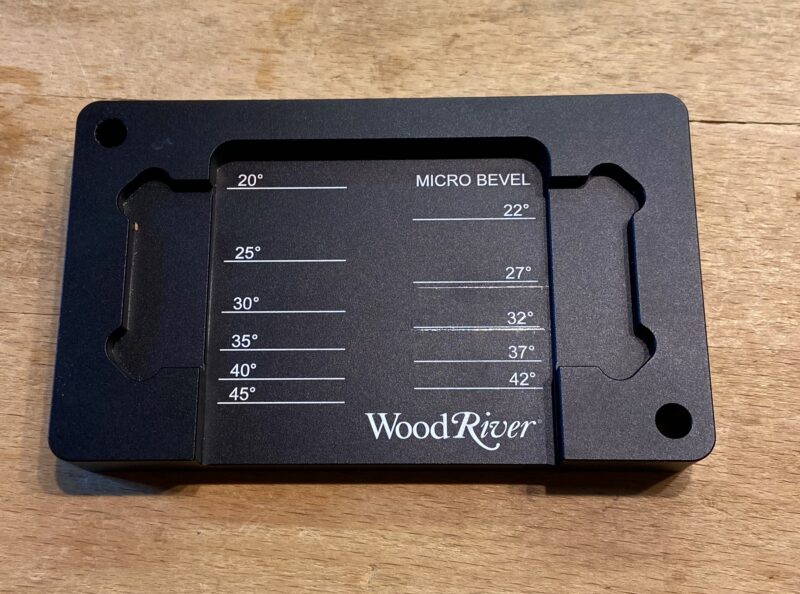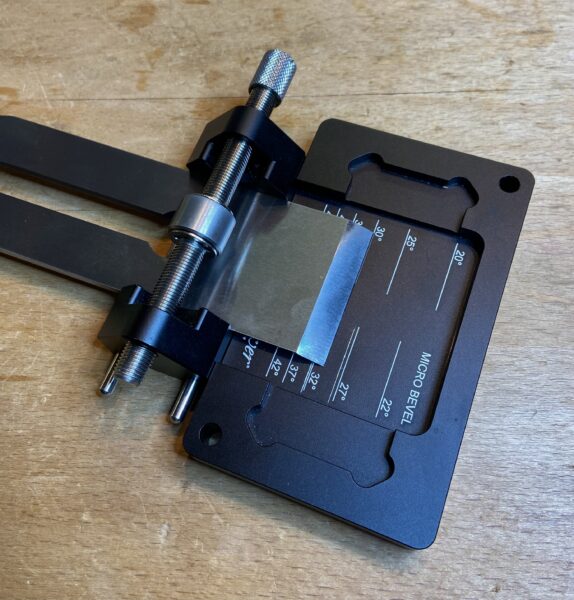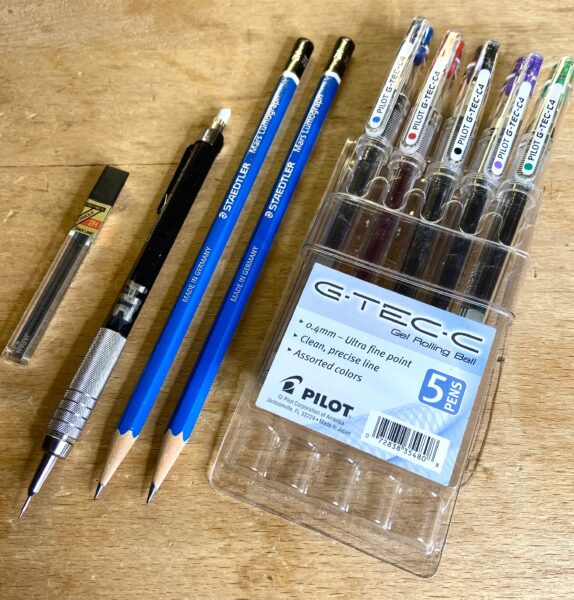
For drafting work, the 0.5mm 2H pencil lead is perfect. HB lead tends to smear on the drafting paper, making a less neat drawing and more difficult erasure.
I use the wooden pencils, also 2H, infrequently because the point easily enlarges in contact diameter. That interferes with the precision of the drawing, especially in small places. Note that they come without erasers.
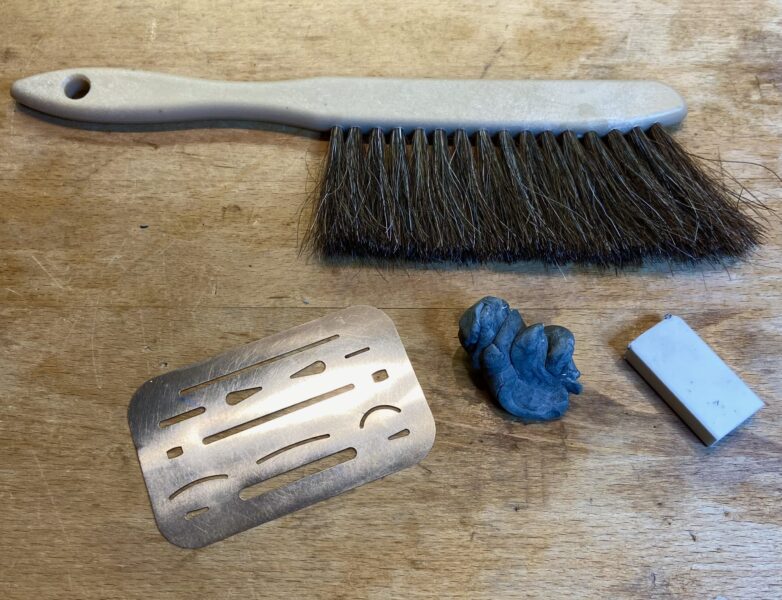
Sometimes I will use the small eraser on the top of the mechanical pencil, especially in tiny areas to erase. For most erasing, I use the white polymer/vinyl rectangle. It erases more easily than the grey kneaded eraser but it does make particle dust. That needs to brushed away with the soft, light brush. You can blow away the dust but it is a pain in the neck to get rid of it all. The same goes for just brushing it away with your hand.
The thin aluminum eraser shield is a must. You cannot get close enough to the retaining line without it.
The ultra-fine 0.4mm gel rolling pens (Pilot) are for those occasional times where you want to go directly over the main pencil lines to finalize a drawing. (Of course, there is no going back!) This will make it easier to see the main components as it is hanging on the board in front of the workbench.
Well, these three posts cover just about all of the drawing tools you need for the shop. They are all well worth having readily available.
But do I draw every piece? No. A few easier ones do not get a formal drawing. Dangerous as it can be, I sometimes use only crude hand-drawn sketches. For some pieces, there are no sketches at all. The main example for that is small boxes.
By the way, with only one exception, I have never made the same piece more than once! Why? I guess I like new ideas, new designs, and new challenges
I should also add: I have use two and three dimensional programs on the computer to try designs. Despite some obvious advantages, I just have not adapted to it. It may be ahead, though for now I am quite comfortable with the pencils.
